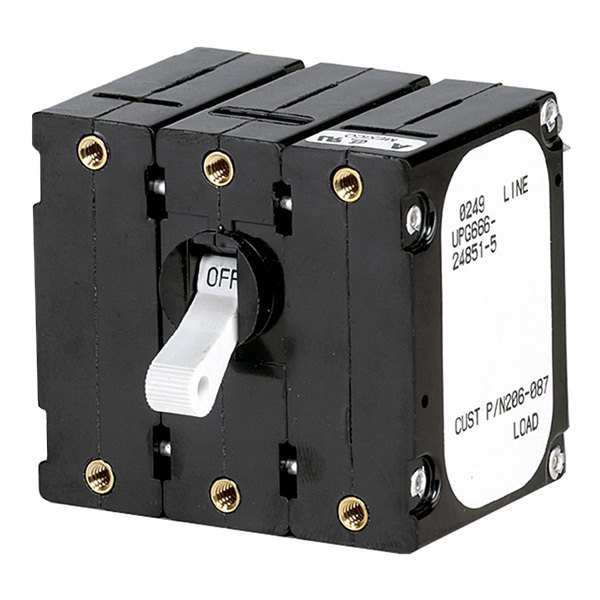That approach can lead to problems for some loads, mainly those that have high inrush (starting) current draw. Some examples are ACs, some pumps, fridges, windlasses etc.
The inrush current can be several times the running current. If a fuse is used the inrush may very well blow the fuse. If you size the fuse bigger to handle the inrush, a situation where the running current is too high can cause overheating and/or damage to the circuits or equipment.
If the original circuit had a breaker, replace it with a breaker to be safe.
Disclaimer: not trying to argue or have a p!$$!ng contest but I respectfully disagree with the assertion that a circuit breaker cannot be replaced with a fuse.
I assumed earlier (shame on me) that when replacing protective devices the circuit wiring is properly sized for the maximum load (including inrush/inductive) it will see. Wire sizing should also account for load duration and bundling as well as the insulation temperature rating. Blue Sea Systems has a great app for this that has better detail than the standard wire sizing charts as it can account for voltage drop, bundle size, and duration as well.
Fuses or breakers should be sized per the device manufacturer's recommendation (usually found in a manual or by contacting tech support). A lot of smaller equipment that has inductive loads (washdown, bilge pump, etc.) will have a recommended fuse size that will account for the inrush current.
That said, for larger inductive loads you mentioned, (windlass, AC) I do agree with you that it is often more practical to use a circuit breaker as the inrush can be high or the loading variable. These will often have a dedicated power supply/breaker.
For resistive loads (lighting, etc) there shouldn't be an issue with using a breaker or fuse.
A lot of boats have helms with fused switch panels or switch panels with separate protective devices. For my boat I found it easier to use dielectric grease on a fuse/switch panel than to source weatherproof breakers (when I got the boat all the original ones were corroded on the back as moisture got into the breaker bodies). I'm a simple-minded person so I like fuses as there's one less thing to troubleshoot in a circuit; I've come across a couple breakers that failed closed (i.e. OEM helm push-to-reset breaker) and don't want to imagine what would happen if they did so with a short in the wiring.
TLDR: Fuses are acceptable for me. Breakers are easier to reset (push a button or flip a switch) than having to pull/replace a fuse. I'd prefer breakers for higher current/inductive loads.
If your fuse keeps blowing or breaker keeps tripping you have an issue with something in the circuit. Size your wiring and protective devices correctly and take care of your equipment.
Again, I don't want to hijack this thread or turn it into a p!ss!ng contest so feel free to reach out to me via direct message.







